Would you drink camel milk?
- Published
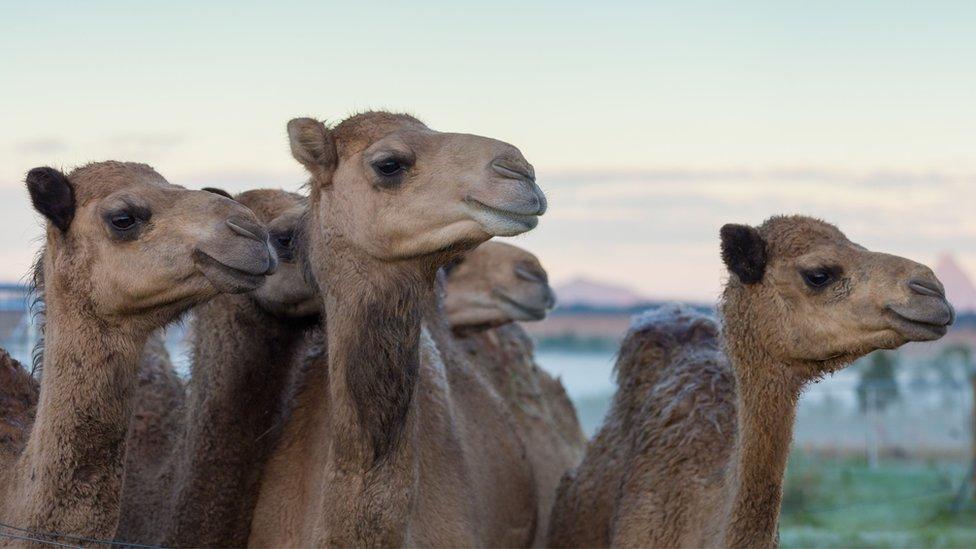
Camels are now increasingly being farmed in Australia for their milk
Would you switch to drinking camel milk? Australia's growing number of camel farmers are hoping to persuade you.
It's not unusual for the owners of a small, close-knit business to treat their workers as an extension of their family.
Of course those members of staff aren't usually of the four-legged, one-humped variety.
Lauren Brisbane is the owner of QCamel, Australia's only certified organic commercial camel milk dairy.
Camel milk production has become one of Australia's emerging agricultural industries, as demand for the product grows both locally and internationally. However, Lauren says her family-owned and run operation isn't driven by commercial influences - it's motivated by love.
"We have a different philosophy in how we run our dairy," she says of the Queensland-based farm.
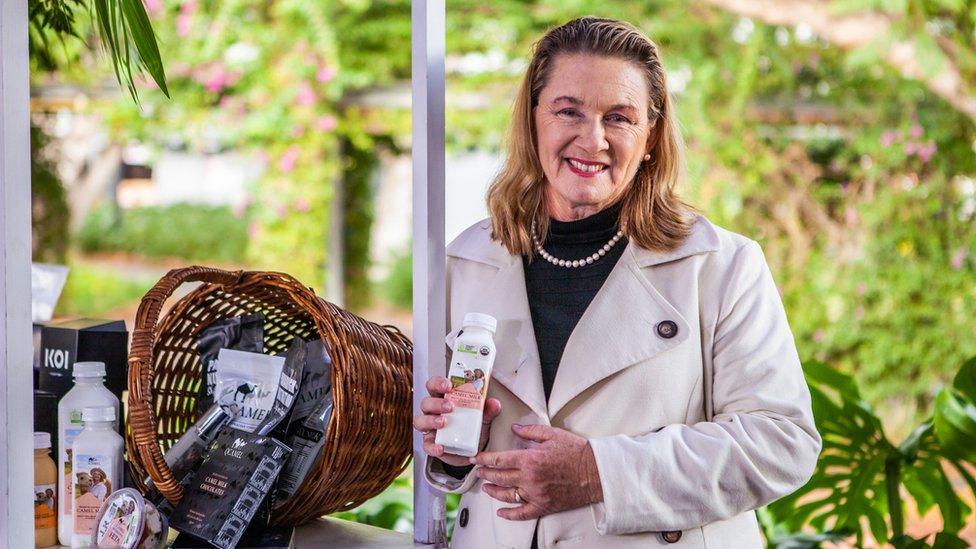
Lauren Brisbane is evangelical about camels and their milk
"It is paramount when running a happy and healthy camel dairy to really understand and respect the camels. We see them as our family members and fellow members of staff, rather than just stock or machinery.
"They're like people, they've all got a different personality. They're gentle souls, kind and loving, and just so intelligent. You can sit and talk to them about what's going on, and they completely understand.
"They're a huge animal… but if you respect that kindness and intelligence, they're easy to work with."
Increasing numbers of Australian farmers are choosing to keep the country's prolific "ships of the desert". The camel was first introduced to Australia in the 1840s to assist in the exploration of the country's vast interior or outback.
There are now thought to be more than 1.2 million in the wild, which is considered to be the world's largest feral population. They are mostly the dromedary or Arabian camel, which has one hump, and is the species chosen for milk production. Australia also has a much smaller wild population of the two humped Bactrian camel.

Camels are said to be intelligent animals
Australia's first camel dairies opened in 2014, and since then the industry has grown considerably, with dairies now operating in almost every state and territory.
While global camel milk production is dominated by countries in North and East Africa, and the Middle East, a 2016 report by the Australian government predicted that "the five years to 2021 are expected to see a major increase in Australian camel milk production"., external
Back in 2016 the country produced 50,000 litres of camel milk, compared with 180,000 litres per annum today.
Megan Williams has certainly helped drive that growth. She and her husband Chris set up a dairy in northern Victoria towards the end of 2014, with just three camels from the wild, which they subsequently had to train to be milked.
Five years later their business - The Camel Milk Co Australia - has moved to a property more than twice the size. They now have a herd of more than 300 camels, with around 60 currently being milked.

Like cow's milk, camel milk is mostly pasteurised before sale
The farm averages around six litres of milk per camel per day. One third of that is sent overseas to customers in Singapore, with shipments of both fresh and powdered milk about to expand into Thailand and Malaysia.
China and the US are on the list of potential future markets for Megan, while other camel milk producers across Australia are exporting to destinations including New Zealand, Papua New Guinea and Hong Kong.
"We're probably doing a couple of hundred litres for export each week, but with Thailand coming on board, that's set to really increase," says Megan.
"More often than not, we are approached by international buyers and their markets. One thing Australia has over any other country in the world is our camels are disease-free."
The disease Megan is referring to is the Middle East Respiratory Syndrome (MERS) virus,, external which can break out in camel populations in the Middle East. The virus can spread to humans from contact with camels, or by consuming raw camel milk, and is potentially fatal.
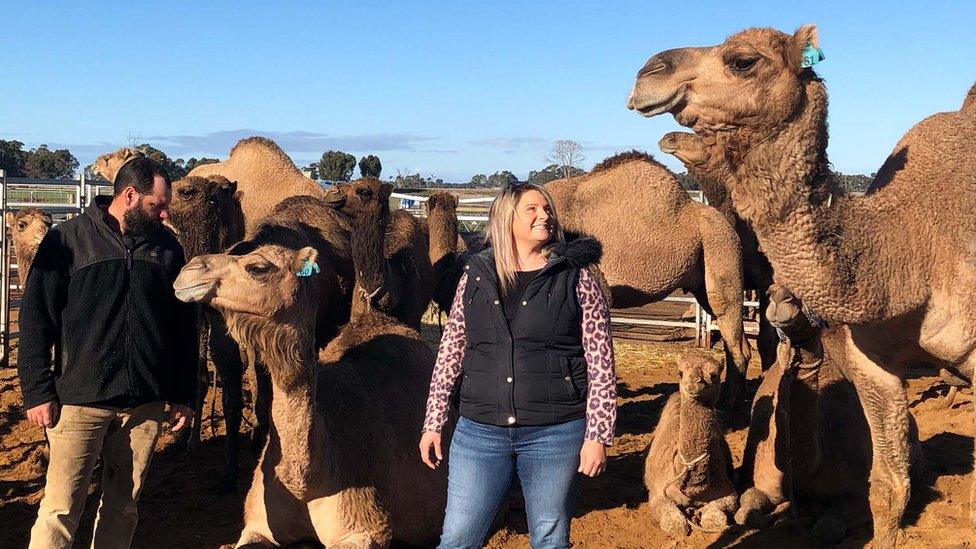
Megan Williams and her husband export a third of their camel milk
While camel milk has been consumed by humans for more than 6,000 years, worldwide demand has grown markedly in recent years, despite its expensive nature. One litre of pasteurised camel milk retails for about A$15 ($10; £8) in Australia, making it 12 times more expensive than cow's milk.
The recent increase in interest in camel milk has been led by consumers seeking the milk's supposed health benefits. On a nutritional level, camel milk is richer than cow's milk in vitamin C, vitamin B, iron, calcium, magnesium and potassium.
Other properties attributed to camel milk, according to the 2016 Australian Government market assessment, include its "attributed" capacity to "alleviate food and seasonal allergies, usefulness in reducing insulin dependency and the treatment of diabetes, [and] ease of digestion".

Global Trade

Rebecca Forwood has been importing Australian camel milk into Singapore for almost two years and believes in its benefits.
"I hate the term 'superfood', but this really is up there as one of the best," she says.
"Since selling it ourselves we average about 160-200 one litre bottles a month, and the numbers are growing as more people are discovering its healing benefits."
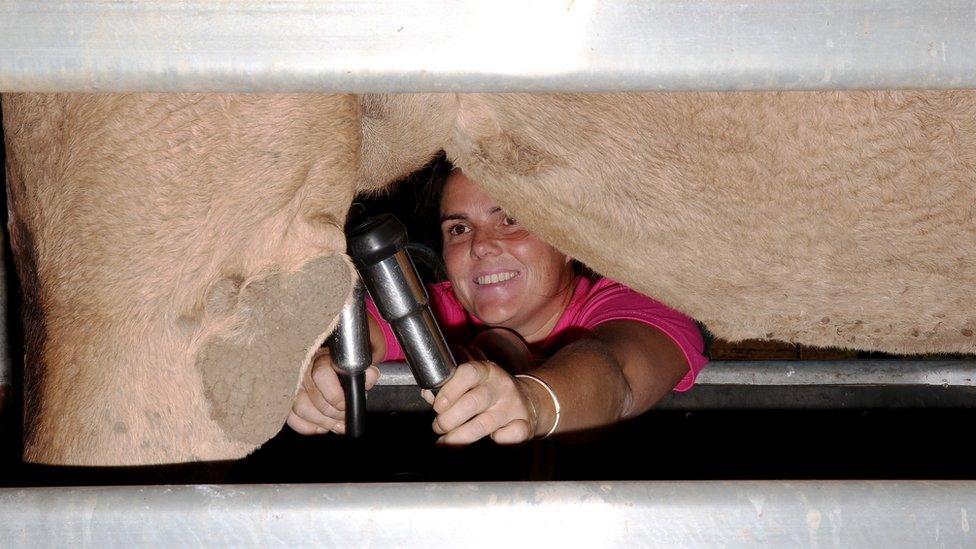
The camels are milked the same way as cows, with milking machines doing the hard work
Charlene Grosse, accredited practising dietician and spokesperson for the Dietitians Association of Australia, says that while camel milk is certainly nutritionally valuable, more research is needed to put some of the other claims to the test.
"When you look at camel milk it's just like cow's milk, it is very nutritious," she says.
"It's low in cholesterol and it's low sugar, so it can be a healthy substitute [to cow's milk], but what we do need to be aware of is there's not enough research at the moment to back up some of the claims being made about camel's milk."
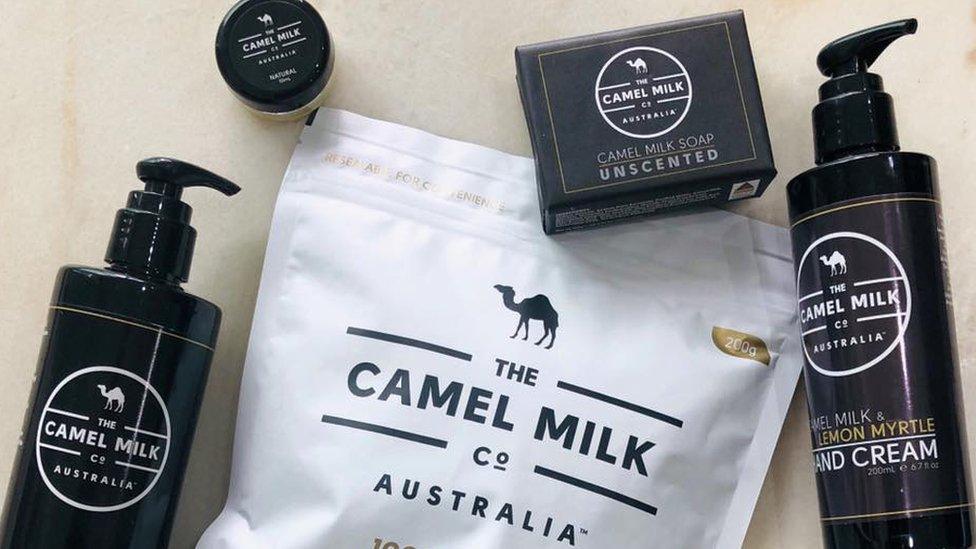
Camel milk is now also used to make skincare products
Regardless of the need for more studies Megan says one thing is certain - the future for this unexpected Australian export industry is certainly bright. In addition to milk, the sector is also starting to make cheeses, skincare products, and chocolate made with camel milk.
"Every week we get a new contact or a new inquiry, and it just keeps growing."
But what is camel milk like? It is said to be similar in colour and texture to cow's milk, but with a slightly saltier taste.